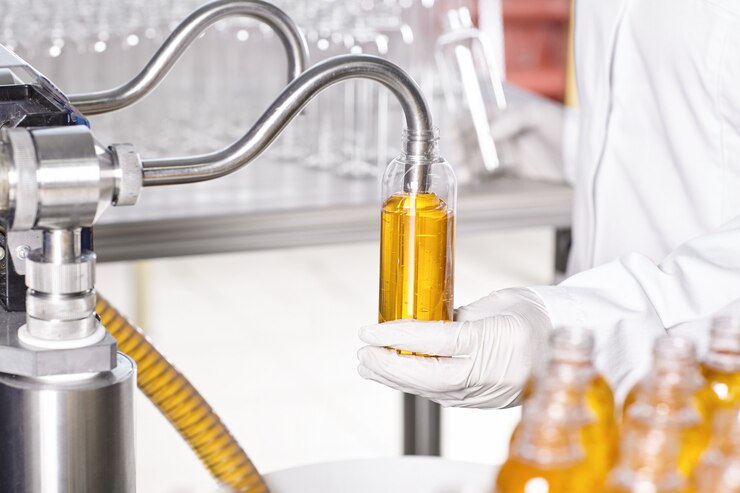CBD oil, derived from the cannabis plant, has gained significant popularity in recent years. While often associated with its psychoactive cousin, THC, CBD offers a distinct set of potential benefits without the intoxicating effects.
Understanding how CBD oil is made not only provides insight into its quality but also helps consumers navigate a diverse and evolving market.
The Source: Hemp vs. Marijuana
The first step in CBD oil production is selecting the right plant source. While both hemp and marijuana belong to the same species, Cannabis sativa, they differ significantly in their CBD and THC content.
- Hemp: Cultivated for industrial purposes, hemp contains high levels of CBD (often exceeding 15%) and very low levels of THC (typically below 0.3%). This low THC content makes hemp-derived CBD oil federally legal in the United States under the 2018 Farm Bill.
- Marijuana: Primarily grown for recreational and medicinal purposes, marijuana contains varying levels of both CBD and THC. Depending on the specific strain, THC content can range from 5-30%, with CBD levels typically being lower than in hemp. Using marijuana for CBD extraction remains illegal at the federal level in the US, although some states have legalized it for medical use.
Therefore, most commercially available CBD oil comes from hemp, ensuring compliance with federal regulations and minimizing the risk of psychoactive effects.
The Extraction Process: Separating the Goods
Once the hemp is harvested and dried, the crucial step of extracting the CBD begins. Several methods exist, each with its own advantages and limitations:
- Supercritical CO2 Extraction: This method utilizes pressurized and heated carbon dioxide (CO2) to act as a solvent, drawing out the desired cannabinoids and other beneficial compounds from the plant material. CO2 extraction is considered a clean and efficient process, producing a high-quality, full-spectrum CBD oil that retains many of the plant’s natural compounds, including terpenes and other cannabinoids.
- Solvent Extraction: This method involves using liquid solvents, such as ethanol or butane, to dissolve the cannabinoids from the hemp. While potentially cost-effective, it requires meticulous post-processing to remove any residual solvent traces, which can be harmful if not eliminated entirely.
- Olive Oil Infusion: This simpler method involves steeping decarboxylated hemp flower (a process that activates the CBD) in olive oil for an extended period. This method is often used for homemade CBD oil but may not be as efficient as other methods in extracting the full range of desired compounds.
The choice of extraction method significantly impacts the final product’s quality, purity, and potential health benefits. Reputable CBD oil producers typically disclose their extraction methods, allowing consumers to make informed choices.
Refining and Finishing Touches
After the initial extraction, the crude oil may undergo further processing depending on the desired outcome:
- Full-Spectrum CBD: This oil retains the full range of natural compounds extracted from the hemp plant, including other cannabinoids, terpenes, and essential oils. This is believed by some to offer an “entourage effect,” where the various compounds work synergistically to enhance the potential benefits of CBD.
- Broad-Spectrum CBD: This oil undergoes additional filtration to remove THC while preserving other beneficial compounds. This option is preferred by individuals seeking the potential benefits of CBD without any traces of THC, which may be important for drug testing purposes or personal preference.
- CBD Isolate: This is the purest form of CBD, achieved through further refinement processes like chromatography. It contains almost exclusively CBD, with minimal to no other plant compounds present.
Following refinement, the CBD oil is diluted with a carrier oil, such as MCT (medium-chain triglyceride) oil or hemp seed oil, to facilitate consumption and ensure accurate dosing. Finally, the oil is bottled, labeled, and distributed to retailers.
Quality Matters: Choosing the Right CBD Oil
With the increasing popularity of CBD oil, navigating the market can be daunting. Here are some key factors to consider when choosing a product:
- Source: Look for brands that use organic, non-GMO hemp grown with sustainable practices.
- Extraction Method: Opt for brands employing clean and safe methods like CO2 extraction.
- Lab Testing: Ensure the product comes with third-party lab reports verifying the CBD content, absence of contaminants, and presence of other cannabinoids, if applicable.
- Reputation: Choose brands with a good reputation for transparency and ethical practices.
Understanding the production process empowers consumers to make informed choices about the CBD oil they choose. By selecting high-quality products from reputable sources, individuals can explore the potential benefits of CBD with confidence and peace of mind.
Disclaimer: This blog is intended for informational purposes only and should not be construed as medical advice. Always consult with a healthcare professional before using any CBD products.

